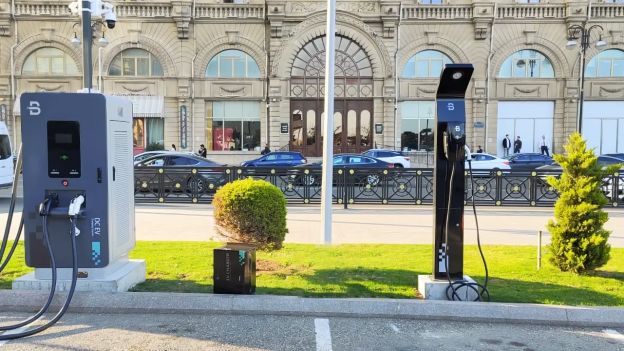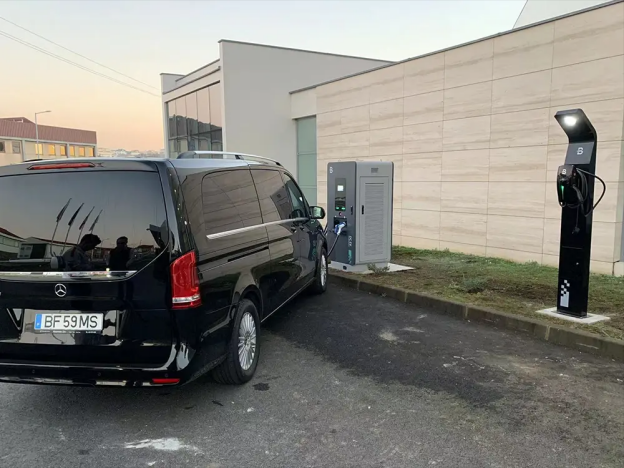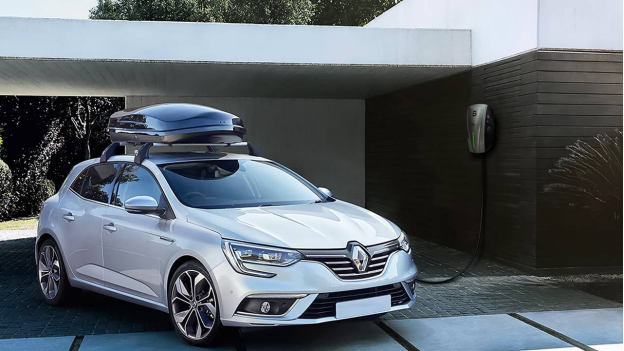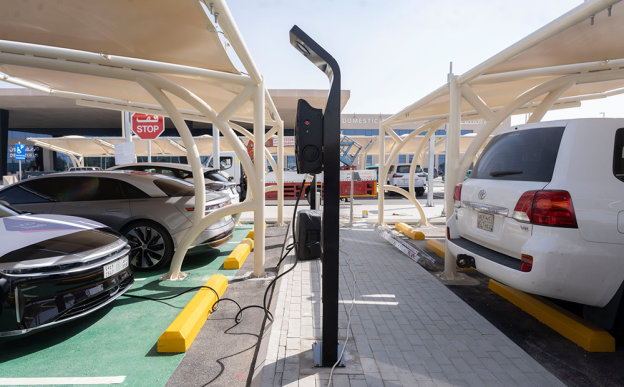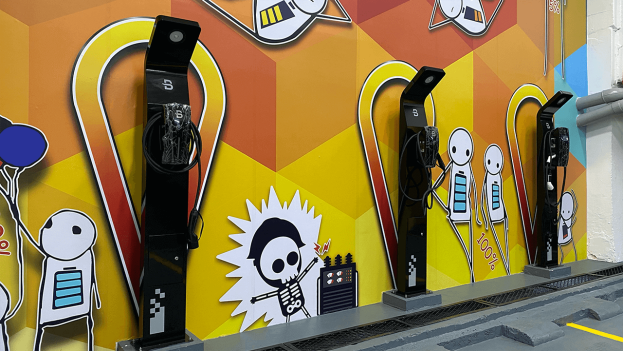With rising eco-awareness and battery prices going down, EVs are becoming more and more common. This increase in the EV sector has led to a higher demand for reliable public and private places to charge electric vehicles.
However, many businesses and homeowners remain uncertain about the process of EV charging station installation.
Understanding the key steps involved in planning and installing charging stations, whether for commercial or residential use, helps simplify the process and avoid potential issues down the line.
Considerations Before Installing EV Charging Stations
Several factors must be evaluated beforehand to ensure a smooth EV charging station installation.
Proper planning at this initial stage helps determine how to install EV chargers successfully while minimizing challenges. The key considerations include:
- Applicable Scenarios
The first step to consider in EV charging station installation is the usage scenarios. For residences, consider the charging habits of car owners, whether fast charging is necessary, and the electricity capacity. For commercial parking lots, consider the charging demand during peak hours.
For public charging stations, it is necessary to consider high-flow areas, obvious locations, as well as peak demand and grid pressure. For highway service areas, fast charging options and a sufficient number of charging stations are needed to reduce user waiting time.
Collecting comprehensive usage data aids in determining the optimal placement and suitable power specifications.
- Charging Requirements
The second step is considering EV owners charging requirements. AC EV chargers are suitable for homes with a moderate charging speed and a lower cost. DC EV fast chargers provide faster charging speeds, suitable for commercial and public charging stations that require fast charging, but at a higher cost.
In addition, the electric vehicle models supported by the charging station, charging standards, and ports are also key considerations for installing the charging station.
Additional factors, such as daily charging patterns, further influence capacity and sizing decisions before EV charging station installation.
- Power Supply
The third step is to ensure that the power supply to the EV charging station is stable and reliable and meets the power requirements of the charger. This may require collaboration with local power utilities to determine the supported electricity capacity.
In addition, you need to consider the distance between the electric service point and the charging location to determine the length of the distribution line.
If you want to achieve energy self-sufficiency while charging at home, you can also consider using solar panels and energy storage systems to charge electric vehicles. This can not only save on charging costs but also flexibly respond to power outages.
- Cost and Budget
The fourth step is to evaluate the installation and maintenance costs of the charging station and make a reasonable budget. This includes the cost of purchasing an EV charger, EV charging station installation costs, operation and maintenance costs, etc.
Checking the price trend of the charger before purchasing may help you find price valleys and save costs. Wholesale chargers from one supplier can also receive corresponding discounts.
Installation factors like electric and potential structural upgrades, post-construction compliance inspections, networking setup, extended warranty contracts, and expected maintenance needs should be factored in.
Government incentives and utility rebates may assist in offsetting the costs of commercial-scale installations. You can search for charging station subsidy policies in your country.
- Installation Location
The fifth step is to choose a suitable installation location, considering the visibility, usability, and safety of the EV charging station. The key consideration here is to choose a site that can safely accommodate parking stations and EV chargers while maintaining adequate movement clearance.
The location should also be away from potential safety hazards, such as flammable objects or high-risk areas. Meanwhile, consider whether the drainage system at the installation location is normal to prevent damage to the charging station caused by extreme weather conditions.
Apart from this, appropriate lighting and carefully planned signage are other key considerations. They allow users to access them conveniently.
- Monitoring and Management
The sixth installation consideration is that it is recommended to choose chargers with charging management software to monitor the usage and device status of the charging station in real-time.
Regular usage reports and charger status analysis not only help monitor charging stations for malfunctions but also allow charging station management personnel to increase the number of charging stations according to the situation, ensuring that the constantly changing charging needs of users are met.
Furthermore, charging management software allows you to set up charging when electricity is cheaper, significantly reducing energy costs. For charging stations in public places, managers can limit when charging stations can be used and how much electricity can be used so that users do not overcharge.
- Regulations and Permits
The seventh step is to consider the latest electrical, building, and fire codes, as well as public works department standards. This also ensures that all EV charging stations are installed within a safe range and do not pose electrical or safety risks.
Other factors include all equipment selections, installation hardware, cable routing plans, emergency signage placement, and future-proofing considerations.
Furthermore, before EV charging station installation, you also need all necessary permits and approvals, including utility approvals and others required by the government, to ensure that the charger operates in compliance with the requirements.
Installation Guidelines for Installing EV Chargers at Home
While residential charging setups generally involve less complexity compared to larger commercial deployments, careful EV charging station installation considerations remain indispensable. Follow these guidelines to successfully install an EV charger at home:
- Choose the Appropriate Site and Charging Stations
Carefully checking and evaluating multiple potential EV charging station installation spots at home is important. A key factor to consider is the parking area’s proximity to the power source. This helps to minimize costly trenching and cabling that may require structural upgrades.
In addition to this, the vehicle’s charging port inlet location, standard charging cable lengths, and parking orientations must be taken into account as well.
For homes, a software-integrated Level 2 AC charger is typically sufficient. If you want quick charging, DC charging stations are unparalleled.
- Hire Electricians to Install Charging Stations
It is recommended to hire an electrician with proven expertise and permission in EV charging station installation. They will verify wiring and cable specifications according to local regulations.
They are also responsible for laying cables, installing EV charging stations, and ensuring all electrical connections are correct to support the long-term operation of charging stations.
- Connect the Power Supply
After installing the EV charging station, the electrician will connect the EV charger to the power source and ensure that all wires and cables are safely arranged.
Wires may be buried under the ground or installed on the walls as needed. Since the charging station is installed outdoors, you also need to pay attention to whether the waterproof performance of its wires is good.
The electrician will also carefully separate this new high-powered branch circuit. Separation involves safely separating the circuit and installing an overload protection device.
- Test Charging Station
After installation, the charger unit and the entire EV charging infrastructure should undergo rigorous testing. Sequentially inspect the appearance, confirm that all components are correctly installed without omissions, and ensure that the plugs and sockets are not loose or damaged.
Next, follow the instructions on the charger to start the charging process. You can test whether the control interface is sensitive and observe if any error codes or warning lights appear.
Also, check if the charging station can communicate with the vehicle correctly and if the current and voltage are normal. Charge the vehicle for a period of time and observe if the charging rate is stable without any interruption issues.
During the charging process, you can touch the charging station to ensure there isn’t overheating.
- Security Check
To protect both expensive equipment assets and users over the long term, you must closely inspect the EV charging station. There are a few things to inspect to ensure connection integrity and environmental security.
Ensure that all connections are safe and there are no loose parts. Check the enclosure where all the electrical parts are and ensure it is sealed well to keep out dust and fluids. This helps protect the charging components inside.
After the EV charging station installation is completed, check the surrounding environment to ensure that there are no obstacles or other safety hazards.
- Regular Inspections and Software Updates
Routine inspections and maintenance plans are crucial. This helps solve minor component wear issues, loose connections, or software issues before escalating to major malfunctions. In addition, regularly cleaning the charging station can prevent dust from blocking the ports and extend the lifespan of the equipment.
Keeping the EV charging station updated using software has many advantages. It facilitates ongoing enhancements in safety, payment option optimization, and more future-proof advantages.
Installation Guidelines for Commercial Charging Stations
Public and commercial EV charging stations require more planning and consideration. Carefully coordinating all aspects involved in a commercial EV charging station installation is important. The following guidelines prove helpful:
- Apply for Installation Permits
Obtaining approval for commercial construction projects is necessary. This helps understand the government’s requirements regarding technical specifications, installation location, safety measures, and other information on EV charging stations.
Only by submitting the application as required, obtaining all required documents, and paying application fees can you ensure that your installation plan complies with all electricity and building regulations. This is beneficial for your investment and public safety.
- Check the Venue
The venue should not only have sufficient space to accommodate charging stations and related facilities but also sufficient movement space. Meanwhile, confirm whether the existing power supply can meet the needs of charging stations.
In addition, the lighting level and flatness of the venue are related to the user experience. The signage guiding users to enter the charging area should also be eye-catching enough to prevent them from spending too much time searching for chargers.
- Upgrade Infrastructure
You may need to upgrade the site’s electric system. Many things could be involved here, such as a comprehensive load test. This checks how much power the site currently uses to assess the need to increase power capacity or improve grid connection.
Upgrading network connections helps support communication and payment systems for charging stations. Operators can also consider installing monitoring cameras and lighting facilities to improve safety.
The charging sites also require protective equipment to prevent power overloads. Operators can consider equipping charging stations with management and monitoring functions, or operators can install a protection system for the entire circuit.
- Preparation Work
Careful preparation work is important before commercial EV charging station installation. The location needs to be carefully surveyed below ground. A special type of radar can locate buried utility lines, like water or gas pipes. This helps avoid accidents during installation.
The trenches carefully guide underground conduit pipes for wiring. The pipes should be laid out smoothly with clean curves. Later, the wiring should be pulled through with no tight knots.
Above ground, clearly marking buried lines makes planning easier. Wiring and chargers can then be placed thoughtfully.
- Hire Electricians to Install EV Charging Stations
Hiring professional electricians for the job is crucial. Choose electrical companies that are licensed for commercial electric systems. They may also offer proper insurance for complicated installation projects.
Choosing a contractor requires checking their qualifications first. Upfront verification of the contractor’s license and certifications is important. This ensures the company hires qualified professionals. Their expertise in installing commercial EV charging stations should be validated.
Safety is a top priority for such complex projects. The proper electrician helps complete the job right the first time.
- Test the Charging Station
Testing the charging station is a critical part of the installation. Several important checks need to be performed. All electrical and mechanical parts must be properly put together and connected.
The electrician will carefully validate the correct assembly. Grounding wire connections are very important for safety. They must be securely fastened with no risk of an open circuit or a short circuit.
Payment systems and station monitoring functions also need to be closely checked to prevent payment or security incidents. Only after passing inspections should the full operation be permitted.
- Safety Inspection and Maintenance
Regular inspection and maintenance are key to safe commercial EV charging station operation over the long term. Infrared scanning spots loose wiring that could overheat. The scans are part of a routine inspection.
The appearance inspection and software updates of the EV charging stations can keep the device in good operating condition, attracting new users and improving the experience of previous users.
Preventative upkeep includes all parts that wear out over time. Replacing worn parts in advance can prevent accidents caused by them. This proactive approach keeps downtime minimal by staying ahead of potential outages.
Residential and Commercial Charging Station Solutions by EVB Charger
EVB Charger is a renowned provider of reliable electric vehicle charging infrastructure. They offer a comprehensive portfolio of AC and DC fast charging solutions that fit varied commercial and residential usage.
Its high-powered AC and DC charging terminals uphold industry certifications like CE, CB, etc., while simplifying installation and management through remote access apps and software. Its top offerings in residential and commercial categories include:
1. 22kW Type 2 AC Charging Station
This wall-mounted AC charging station is safe for charging at home. Dual voltage input capacity offers fast 22kW charging. Its rugged IP55/65 design handles all weather conditions. Top features include:
- Dynamic load balancing technology analyzes real-time energy usage to intelligently adjust the charger’s output between 6-32 amps. This ensures a balanced load between the EV chargers and home appliances.
- The mobile app allows remote monitoring and control of charging sessions. It will display usage data, notifications, and cost reports, enhancing user convenience.
- Its rugged enclosure is sealed to IP55/IP65 standards, protecting sensitive components from dust and moisture ingress. This robust construction provides years of trouble-free operation in all weather conditions.
- The EV charger offers different charging powers, from 7kW to 22kW, increasing charging speed flexibility depending on the available power capacity.
Floor-Mounted Split DC EV Charger
The split-type DC fast charger incorporates a rectifier cabinet and charging terminal for efficient EV charging. Its modular design easily customizes scalable output flexibly. The top features that make it an attractive choice for public use include the following:
- 360kW to 600kW rectifier cabinets integrate with 240kW DC fast charger EV terminals, providing strong charging power for commercial use.
- The modular design incorporates multiple independent charging terminals that can be scaled up or down easily to cater to different power output needs. It is suitable for various scenarios and optimizes energy utilization.
- An integrated fault self-diagnostic system continuously monitors system parameters, promptly displaying error codes on the screen. This improves uptime through predictive maintenance.
- A high conversion efficiency of over 95% reduces energy waste and charging costs significantly over the long run.
- The clear 7-inch touchscreen interface provides an intuitive user experience both outdoors and in low-light conditions through its high brightness and clarity.
- Its space-saving split design separates the rectifier cabinet and charging terminal units for simplified routing of cables underground or overhead. This streamlines the installation.
- The Floor-Mounted Split DC EV Charger can integrate with energy storage systems, enhancing charging stability and emergency response capability.
FAQs
Understanding the EV charging station installation process can seem complex at first due to the factors involved. This section aims to answer some of the most common questions that frequently arise.
- How Long Does It Take to Install EV Charging Stations?
Larger commercial EV charging station installations require electrical service upgrades. They commonly necessitate weeks or months of preparatory work, such as installation permits, site inspections, infrastructure upgrades, and customized charging stations, as mentioned above.
Residential Level 2 car charger installations are a more expedited process. If the electrical review meets the requirements, certified technicians only need a few hours or several business days to install EV charging stations.
- Can I Install Electric Vehicle Charging Stations Myself?
It is theoretically possible to install an EV charging station by oneself, but this is not recommended as it involves many technical and safety considerations.
Firstly, incorrect EV charging station installation may lead to electrical malfunctions, fires, or electric shock accidents. In addition, professionally installed charging stations usually provide maintenance and service support, while installed charging stations may need to solve these problems on their own.
Conclusion
Determining the right solutions for EV charging station installation needs evaluation and planning. The seasoned brand EVB Charger offers a versatile portfolio of commercial and residential products designed to safely and efficiently meet diverse charging needs.
As electric vehicles rise in popularity, EVB Charger is dedicated to empowering transportation transformations with certified EV chargers. Individuals and enterprises can feel assured that their investments can support sustainable transportation for years to come. For more details, visit the company’s website!
